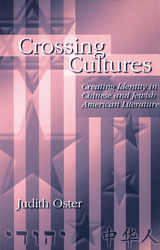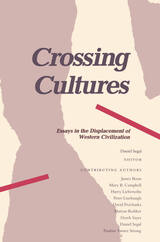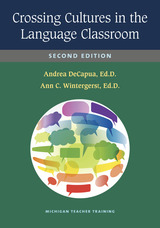3 books about Crossing Cultures

Judith Oster
University of Missouri Press
In this important new study, Judith Oster looks at the literature of Chinese Americans and Jewish Americans in relation to each other. Examining what is most at issue for both groups as they live between two cultures, languages, and environments, Oster focuses on the struggles of protagonists to form identities that are necessarily bicultural and always in process. Recognizing what poststructuralism has demonstrated regarding the instability of the subject and the impossibility of a unitary identity, Oster contends that the writers of these works are attempting to shore up the fragments, to construct, through their texts, some sort of wholeness and to answer at least partially the questions Who am I? and Where do I belong?
Oster also examines the relationship of the reader to these texts. When encountering texts written by and about “others,” readers enter a world different from their own, only to find that the book has become mirrorlike, reflecting aspects of themselves: they encounter identity struggles that are familiar but writ large, more dramatic, and set in alien environments.
Among the figures Oster considers are writers of autobiographical works like Maxine Hong Kingston and Eva Hoffman and writers of fiction: Amy Tan, Anzia Yezierska, Henry Roth, Philip Roth, Cynthia Ozick, Lan Samantha Chang, and Frank Chin. In explicating their work, Oster uses Lacan’s idea of the “mirror stage,” research in language acquisition and bilingualism, the reader-response theories of Iser and Wimmers, and the identity theories of Charles Taylor, Emile Benveniste, and others.
Oster provides detailed analyses of mirrors and doubling in bicultural texts; the relationships between language and identity and between language and culture; and code-switching and interlanguage (English expressed in a foreign syntax). She discusses food and hunger as metaphors that express the urgent need to hear and tell stories on the part of those forging a bicultural identity. She also shows how American schooling can undermine the home culture’s deepest values, exacerbating children’s conflicts within their families and within themselves. In a chapter on theories of autobiography, Oster looks at the act of writing and how the page becomes a home that bicultural writers create for themselves. Written in an engaging, readable style, this is a valuable contribution to the field of multicultural literary criticism.
[more]

Crossing Cultures
Essays in the Displacement of Western Civilization
Daniel Segal
University of Arizona Press, 1992
Through re-examination of colonial and post-colonial encounters, this collection of essays makes a strategic intervention into the current debate over the study of "Western Civilization." Together they question whether, at least since Columbus, "the West" has existed independent of its relations with those deemed Other.
[more]

Crossing Cultures in the Language Classroom, Second Edition
Andrea DeCapua, Ed.D., and Ann C. Wintergerst, Ed.D.
University of Michigan Press, 2016
A MICHIGAN TEACHER TRAINING title
Teachers are often in the forefront of today’s cross-cultural contact, whether in the language classroom or in the K–12 or university/college classroom, but they are not always prepared to handle the various issues that can arise in terms of cross-cultural communication. The intent of this book is to make education in cross-cultural awareness accessible to a broad range of teachers working in a variety of educational settings.
Crossing Cultures in the Language Classroom attempts to balance theory and practice for pre-service and in-service teachers in general education programs or in ESL/EFL, bilingual, and foreign language teacher training programs, as well as cross-cultural awareness workshops. This book is unique in that it combines theory with a wide range of experiential activities and projects designed to actively engage users in the process of understanding different aspects of cross-cultural awareness. The goals of the book are to help readers:
Teachers are often in the forefront of today’s cross-cultural contact, whether in the language classroom or in the K–12 or university/college classroom, but they are not always prepared to handle the various issues that can arise in terms of cross-cultural communication. The intent of this book is to make education in cross-cultural awareness accessible to a broad range of teachers working in a variety of educational settings.
Crossing Cultures in the Language Classroom attempts to balance theory and practice for pre-service and in-service teachers in general education programs or in ESL/EFL, bilingual, and foreign language teacher training programs, as well as cross-cultural awareness workshops. This book is unique in that it combines theory with a wide range of experiential activities and projects designed to actively engage users in the process of understanding different aspects of cross-cultural awareness. The goals of the book are to help readers:
- expand cultural awareness of one’s own culture and that of others
- achieve a deeper understanding of what culture is and the relationship between culture and language
- acquire the ability to observe behaviors in order to draw conclusions based on observation rather than preconceptions
- understand and implement observations of cultural similarities and differences
- develop an attitude of tolerance toward cultural differences and move away from the “single story.”
[more]
READERS
Browse our collection.
PUBLISHERS
See BiblioVault's publisher services.
STUDENT SERVICES
Files for college accessibility offices.
UChicago Accessibility Resources
home | accessibility | search | about | contact us
BiblioVault ® 2001 - 2024
The University of Chicago Press









